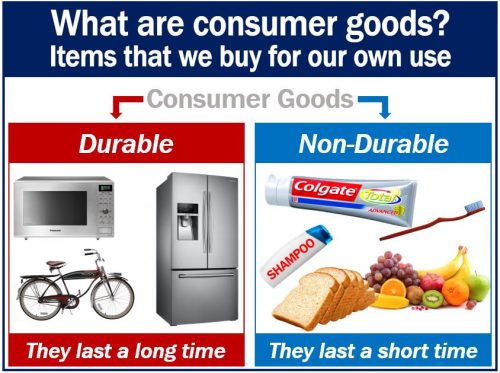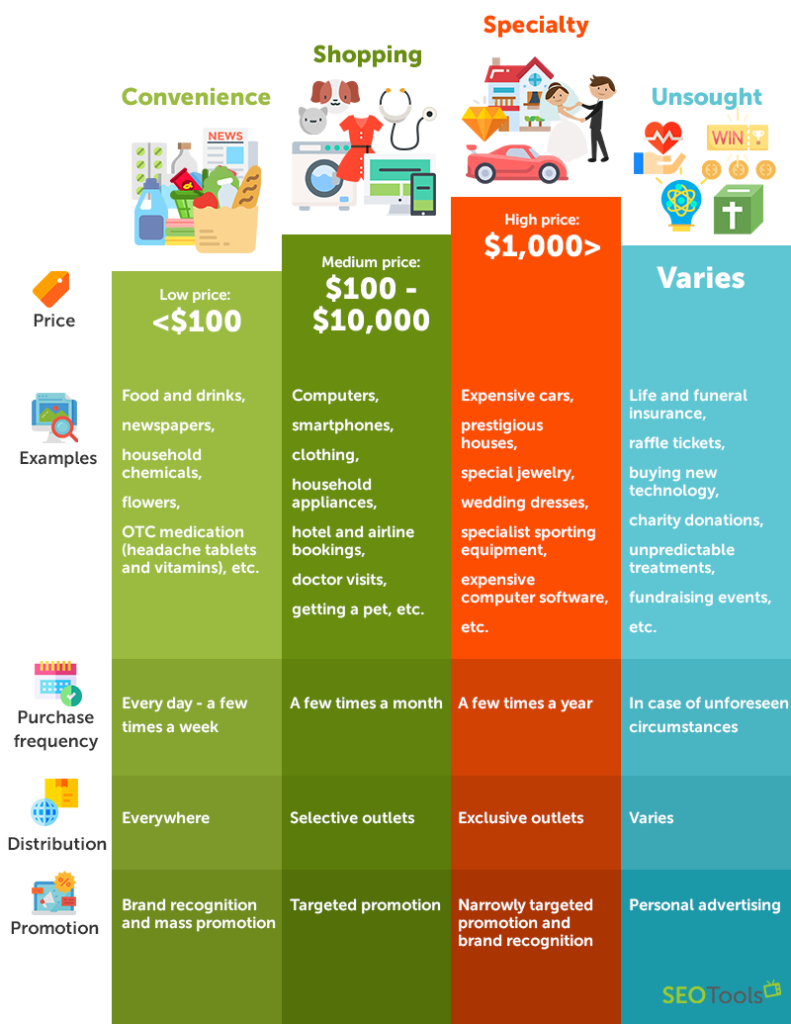Product Classifications
Marketers classify products on the basis of durability, tangibility, and use (consumer or industrial). Each type has an appropriate marketing-mix strategy
Durability and tangibility.
Nondurable goods are tangible goods (such as shampoo) normally consumed in one or a few uses. Because these are purchased frequently, the appropriate strategy is to make them available in many locations, charge a small markup, and advertise to induce trial and build preference.
Durable goods are tangible goods (such as refrigerators) that survive many uses, require more personal selling and service, command a higher margin, and require more seller guarantees.
Services are intangible, inseparable, variable, and perishable products (such as haircuts) that normally require more quality control, supplier credibility, and adaptability.

Consumer-goods classification.
Classified on the basis of shopping habits, these include convenience goods (such as soft drinks) that are purchased frequently, immediately, and with minimal effort; shopping goods (such as furniture) that consumers compare on such bases as suitability, quality, price, and style; specialty goods (such as cars) with unique characteristics or brand identification for which enough buyers are willing to make a special purchasing effort; and unsought goods (such as smoke detectors) that the consumer does not know about or normally think of buying

Industrial-goods classification.
Materials and parts are goods that enter the manufacturer’s product completely. Raw materials can be either farm products (wheat) or natural products (iron ore). Manufactured materials and parts fall into two categories: component materials (wires) and component parts (small motors). Capital items are long-lasting goods that facilitate developing or managing the finished product, including installations(factories) and equipment (tools). Supplies and business services are short-term goods and services that facilitate developing or managing the finished product.
Example of Industrial Goods Classifications
Classification of Industrial products is necessary as it helps decision making for the organization. Industrial goods are classified on the basis of their relative cost and where they enter the production process.
There are 5 major classes of Industrial products
- Natural Materials & Parts
- Manufactured materials and parts
- Capital items
- Supplies &
- Business services
The above are 5 of the major classification of Industrial products and the numerous sub classes within them. Depending on the abilities of the small business or the large business, they can contribute to one sub class or another. You can be a bulk seller to one company (automobile OEM), or you can sell small items in bulk to large companies (Paper distributor).
